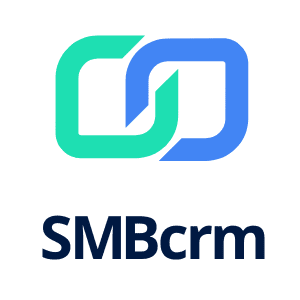SMS and Email Marketing have long been essential tools for businesses looking to reach their target audience and communicate with existing customers. Both channels offer unique advantages and disadvantages, making it important to choose the right strategy for your business’s success.
In this article, we will discuss the pros and cons of SMS and Email Marketing and provide guidance on how to choose the perfect strategy for your business. Additionally, we will present tips on integrating both methods effectively.
SMS Marketing
Pros
- High open rates – SMS messages boast an impressive open rate of approximately 98%, ensuring your messages are highly likely to be seen by recipients.
- Immediate delivery – Most text messages are read within minutes of being sent, allowing for real-time communication with customers.
- Direct communication with customers – Connecting directly with customers’ mobile devices creates a personal connection and sense of immediacy.
- Highly targeted campaigns – Audience targeting in SMS marketing enables businesses to tailor messages to specific demographics, preferences, and behaviors.
Cons
- Limited character count – SMS messages are typically limited to 160 characters, which can be a challenge for delivering complex messages.
- Possible higher opt-out rates – Customers may be more likely to opt-out of SMS messages due to perceived intrusiveness or potential text messaging fees.
- Compliance regulations and restrictions – Businesses must adhere to strict regulations surrounding SMS marketing, such as obtaining customer consent and providing opt-out options.
- Potential cost concerns – SMS marketing can be more expensive than email marketing, particularly for high-volume campaigns.
Email Marketing
Pros
- Cost-effective – Email marketing is generally a more affordable option, with lower costs per message sent.
- Greater creative flexibility – Emails allow for more complex designs, incorporating images, videos, and various text elements.
- Detailed tracking and analytics – Metrics such as open rates, click-through rates, and conversion rates provide valuable insights for future campaigns.
- List segmentation capabilities – Businesses can personalize and target email campaigns by segmenting their subscriber lists based on demographics, preferences, and behaviors.
Cons
- Lower open rates compared to SMS – While still relatively high, email open rates tend to be lower than those of SMS messages.
- Greater competition in customer inboxes – With the sheer volume of emails most people receive daily, standing out from the competition can be a challenge.
- Potential for spam filters and deliverability issues – Ensuring emails reach customer inboxes and are not flagged as spam is essential.
- Longer lead time for design and content creation – Email marketing requires more time for design, testing, and content creation compared to SMS.
Factors to Consider When Choosing Between SMS and Email Marketing
Business Goals
Identifying specific goals and objectives for marketing campaigns, such as driving sales or increasing customer engagement, is crucial for selecting the appropriate channel.
Target Audience
Understanding the preferences and characteristics of your audience, including age, location, and tech-savvy, helps inform the choice between SMS and email. Investing in research to understand customer behaviors, such as communication preferences and time spent on devices, can also provide invaluable insights.
Content Type
Consider which content types are best suited for each communication method. SMS messages are ideal for promotions, reminders, and important updates. Email marketing, on the other hand, offers more flexibility for content with visuals and longer text components.
Budget
It’s essential to compare the costs of both SMS and Email Marketing, as each platform offers different pricing structures. Allocate resources for each option based on your specific marketing goals and anticipated ROI.
Integration with Other Marketing Efforts
Coordinating SMS and Email Marketing with your overall marketing strategies, such as coordinating with social media, paid advertising, and content marketing, can help create a seamless, cohesive brand experience for your audience.
How to Get Started with Both SMS and Email Marketing
Combining both strategies can create a powerful, well-rounded marketing approach. Begin by exploring recommended tools and services for integrating both SMS and email marketing, like Leads 365.
Create targeted, segmented campaigns that cater to specific audience segments, and develop content that is appropriate for each medium. Test various messaging strategies to find what resonates most with your target audience.
Consider using email marketing for longer, more visually engaging content and SMS for time-sensitive material or important updates. Additionally, utilize analytics from both channels to make data-driven decisions to optimize your campaigns.
As your business evolves, continue to adjust and adapt your strategies to achieve the best possible results from the combination of SMS and Email Marketing.
Conclusion
In summary, understanding the benefits and drawbacks of both SMS and Email Marketing is crucial to choosing the perfect strategy for your business success. By taking into consideration factors such as business goals, target audience, content type, budget, and integration with other marketing efforts, businesses can make informed decisions about which channel is most suitable for their specific needs.
In today’s increasingly connected world, utilizing both SMS and Email Marketing can bring your business even greater success, allowing for a powerful, integrated approach to reaching your audience and achieving your marketing goals.
Frequently Asked Questions (FAQs)
- What are the key differences between SMS marketing and email marketing?
SMS marketing involves sending text messages to customers, offering immediate communication with a high open rate. Email marketing is a more cost-effective option with greater creative flexibility and detailed analytics. Both channels have different strengths and weaknesses.
- Can I use both SMS and email marketing together for my business?
Yes, integrating both SMS and email marketing can provide a comprehensive and well-rounded marketing strategy, ensuring that you cater to the preferences of different customer segments and effectively communicate various types of content.
- How can I choose which channel is best for my specific marketing goals?
Considering factors such as your target audience, the type of content, your budget, and integration with other marketing efforts will help you determine which channel is best suited to achieve your goals.
- What kind of content works well for SMS marketing?
SMS marketing is ideal for time-sensitive material, promotions, reminders, and important updates due to its immediate delivery and high open rates.
- How can I measure the success of my SMS and email marketing campaigns?
Utilize analytics tools to track open rates, click-through rates, conversion rates, and other key performance indicators for both SMS and email marketing campaigns. This data can provide valuable insights to optimize your marketing strategies moving forward.

